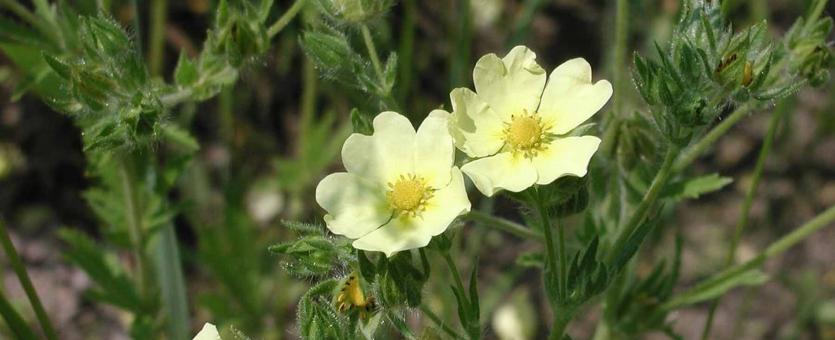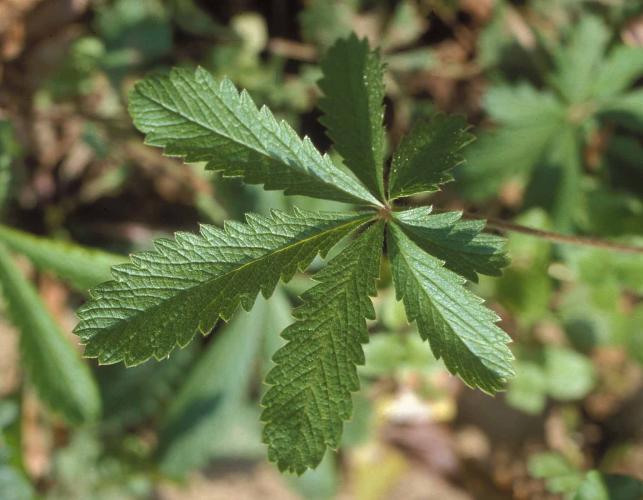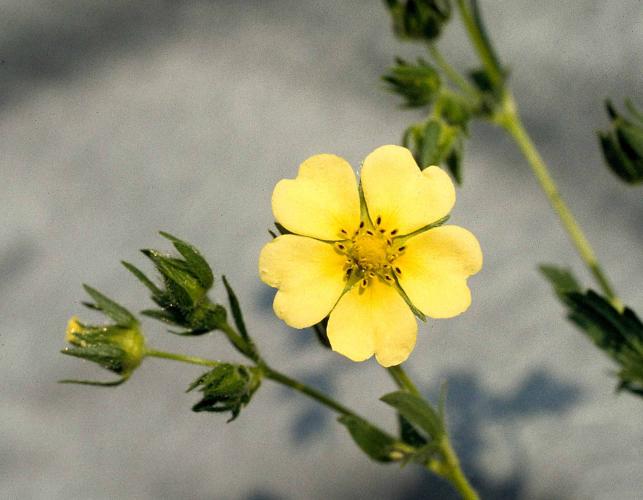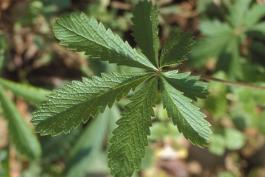
A stout, leafy, very hairy, tall, much-branched perennial, sometimes in large colonies. Flowers with 5 slightly notched petals, longer than the calyx lobes, light yellow to cream, up to 50 stamens, in flat clusters. Blooms May-August. Leaves 5- to 7-divided, with ovate, toothed leaflets; fingerlike. The nodes on the stems have leafy stipules. Basal leaves on long stalks, stem leaves on shorter stalks or stalkless.
Similar species: There are 7 Potentilla species recorded for Missouri. Rough cinquefoil (P. norvegica) apparently also came to us from Europe and is scattered in the northern and western halves of Missouri. Its flowers are bright yellow, arising on stalks from the leaf axils, and the 5 petals and 5 sepals are about equally long. It blooms May-October. The leaves are 3-divided, with the leaflets elliptical to broadly ovate; toothed.
Height: to 2 feet.

Statewide.
Habitat and Conservation
Fields, pastures, waste grounds, rights-of-way, and other disturbed areas. Also prairies, bases and tops of bluffs, glades, and banks of streams. A native of Europe, introduced widely in the United States.
Human Connections
This plant is disliked by farmers and shunned by grazing animals. The genus name, Potentilla, means “little potent one,” referring to historic medicinal uses of some of the 300 species in this genus.
Ecosystem Connections
Rough-fruited cinquefoil is considered a problem weed in most places where it has been introduced. In some states, it is considered an invasive exotic weed of native grasslands.































